Welcome to the jungle – Chitwan National Park
At the beginning of our stay in Nepal, we wanted to spend our time mainly in Kathmandu, but once again things happened to be different than we previously planned. Inspired by the “Very Hungry Nomads” (two brave women traveling to every country in the world), we decided to include also Chitwan National Park in our itinerary.
The Chitwan National Park is located around 160 kilometers from Kathmandu which, as we learned on our first day in Nepal, meant spending several hours on the road to reach our destination.
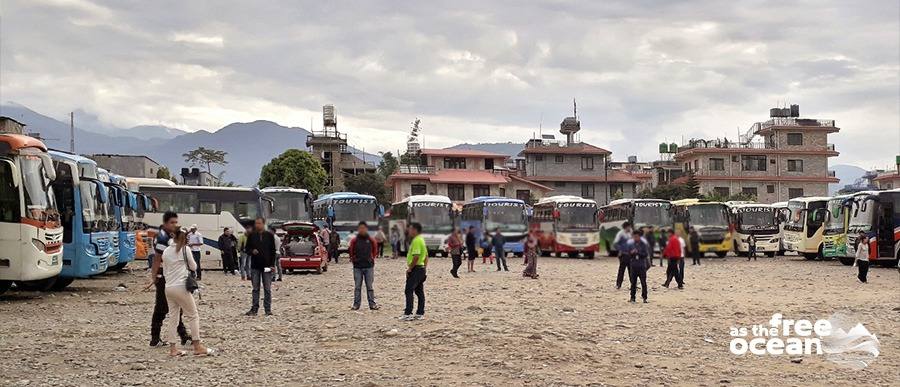
Traveling to Chitwan National Park
So we found ourselves at 5.00 clock in the morning at the bus station from where we took a “tourist bus”, which would take us to Sauraha. Approximately 11 hours later we finally arrived and, despite exhaustion and tiredness from the long drive, the first impression awoke a big excitement for the upcoming day.
From the bus stop, it was only a 15-minute walk to our hostel, Evergreen Lodge, an Eco-Hostel specializing in eco-friendly tourism. It has been one of the nicest accommodations we have had on our trip.
The hostel served delicious food and our bamboo hut with hammocks proved to be a perfect place where we could forget quickly about the long drive. Tours were also organized here and we were informed about possible options in the same evening. We quickly realized that the hostel and the entire region valued eco-tourism, so we decided to go for a walking safari that would not bother the animals too much (compared to the jeeps) and lasted the whole day.
Chitwan National Park
The park is located in the Terai lowlands in southern Nepal and was founded in 1973 under the name Royal Chitwan National Park. It covers 932km² and is a UNESCO World Heritage site since 1984. Unfortunately, the area has been strongly and continuously affected by poaching.
Currently, the park is hosting 700 different species of animals, including the Indian rhinoceros, Bengali tigers, sloth bears, crocodiles and gharials, elephant bulls, rhesus monkeys and over 500 species of birds. The largest part of the forest consists of salvia trees and about 20% is covered with grass, the elephant grass. Another species of plant found here is the Kapok, the tree with silk cotton.
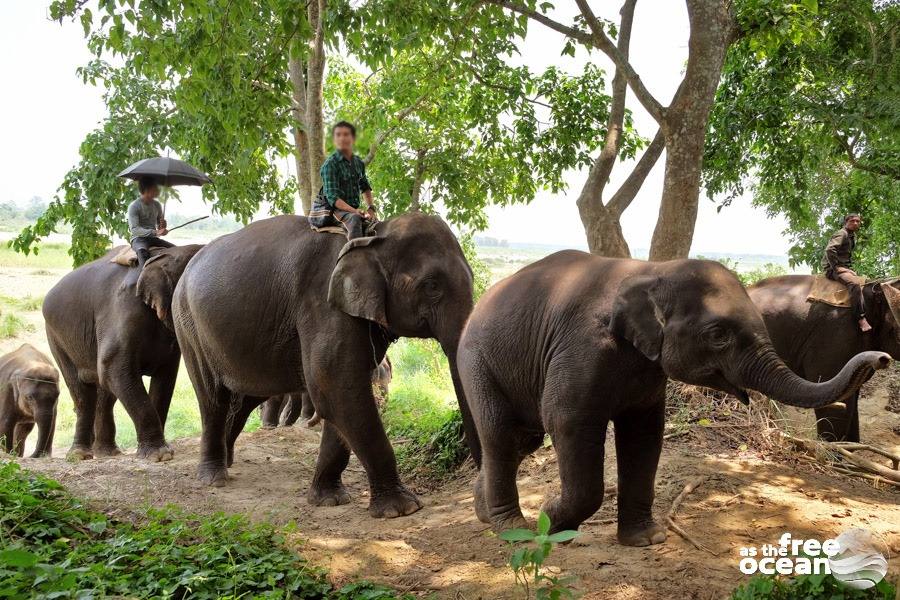
After a pleasant night in the bamboo tree house, we were introduced early morning at 07.00am to our guide Sandy, a funny guy who made our day unforgettable.
We started with a short walk to the riverside where we had already our first highlight. Even before we got our instructions on how to behave in the canoe that would bring us to the start of our walking route through the jungle, we could observe a rhino taking a bath. We stopped breathing for a moment when we saw the big animal and a short time later we noticed the crocodiles relaxing under the morning sun. At that moment I realized what to expect from that day. We boarded the canoe and went for a cruise on the river, me, Alex and 3 other girls, surrounded by wild birds and predators.
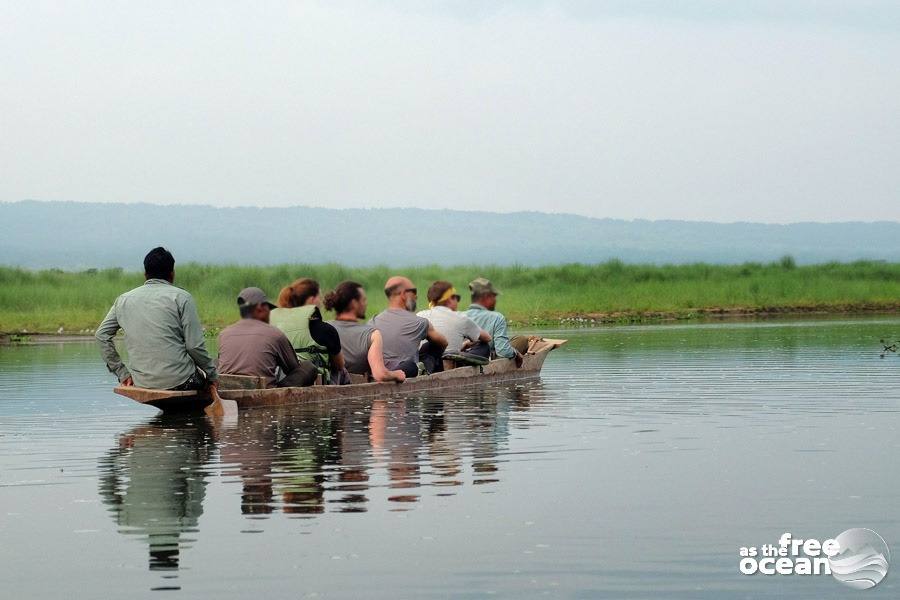
The first 15 minutes in the shaky boat nobody moved or said anything but I could feel the tension that mixed with the excitement for the adventure that we signed up for. Sandy, instead, was quite relaxed and happily explained to us about the flora and fauna in the National Park. After a while, everyone got used to the fact that we were out in the wild and the mood became more relaxed. We observed many different birds, other crocodiles, peacocks and farmers who did their work along the river. About one hour later we reached a water hole. Here we left the canoe and were allowed to observe the rhinos again. Being so close to these giant animals was amazing. We’ll never forget that incredible experience.
Into the wild
It was here where our adventure had its real starting point. Our guide explained the different behaviors we should adopt, for example, when we would encounter a bear, a tiger, an elephant or a rhino. At that moment, I no longer knew if I really wanted to continue and if I would “survive” that day. Of course, Sandy and his companion, who joined the group, were trained and certified tour guides. They made us understand that we were dealing with wild animals and we needed to be careful at all times. We liked a lot their attitude towards their homeland and the awareness that the welfare of the animals is always a top priority.
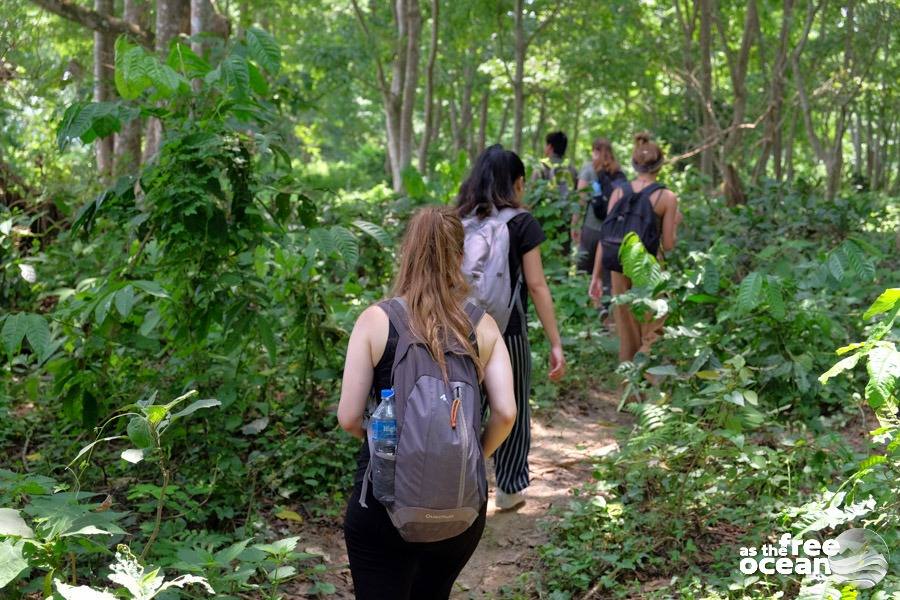
The walk took us through high grass into the forest. Here we observed another rhino, different birds and interesting beetles. After a while, our guide stopped and showed us a gray moving point in the distance. He said to us: “This is Ronaldo!” As we had learned before, Ronaldo was a wild elephant bull who was attracted by the elephant ladies of the retreat center in the village and always reacted very aggressively towards humans. I was very glad that he was on the other side of the river, but a look through the binoculars showed me that he was huge and moving incredibly fast. We continued for a while longer when we recognized more elephants heading straight towards us.
Elephants in Chitwan National Park
At first, I guessed that these are tourists who were riding elephants, but the fast-approaching herd was led by only a few people. Our guide explained to us that they were government elephants. In this region, because of the request of the tourists, elephant riding was offered but not actually supported by the local community.
In Nepal elephants are divided into “privately-owned” and “government-owned”. The privately-owned elephants are used for elephant riding during jungle tours. But the persons that take care of these elephants can not be convicted, as they live off this “business” and sleep under harsh conditions with the elephants in the stable. You can only blame the tourists who support these activities. Some people are unaware of how the animals are treated and therefore there is a lot of need for education on this matter.

The elephants we came across were on a mission to track injured animals and to protect the park (for example, because of the danger of poaching). According to our tour guide, these animals were rarely used to ride (always without a chair) and only because it was easier to get to other animals for counting or for providing medical care than with a noisy jeep.
Tigers, deer and other animals
The path led us deeper into the forest when Sandy suddenly stopped and gave his colleague a frightened look. He whispered to us that he recognizes a strong smell of cat urine. And again, the tension and the disturbing silence were back. We slowly moved on. A sudden rustle made us turn our attention to some bushes where we could spot something of an orange color moving fast… a deer. Everyone was probably glad that it was actually “only” a deer, but everyone secretly hoped to spot a tiger. A little further we saw the scratch marks of a tiger on a tree and here I knew that I didn’t want to meet the king of the jungle that day. The deep tracks on the tree helped us guess what a big cat it must have been.
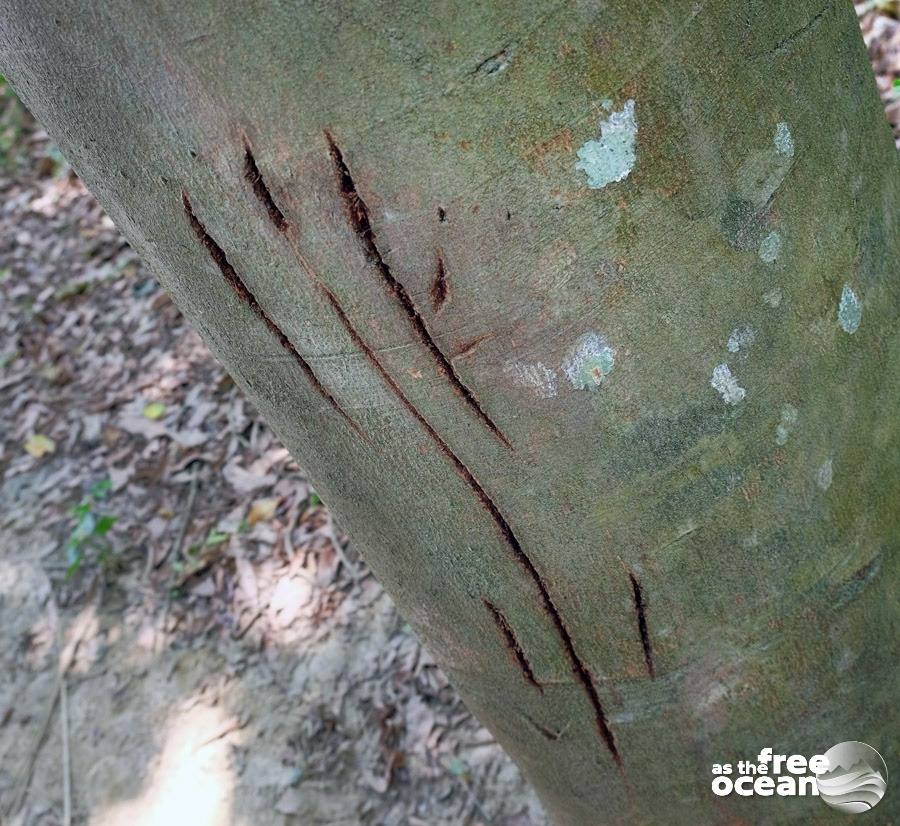
After this moment of shock, we continued to our rest stop. Here we enjoyed the view from a high seat and ate our lunch, which we got from the hostel. It was lovely, watching deer and water buffaloes while listening to the sounds of the jungle. Some members of the group took also a nap, but for me it was not an option as the adrenaline was still in my blood.
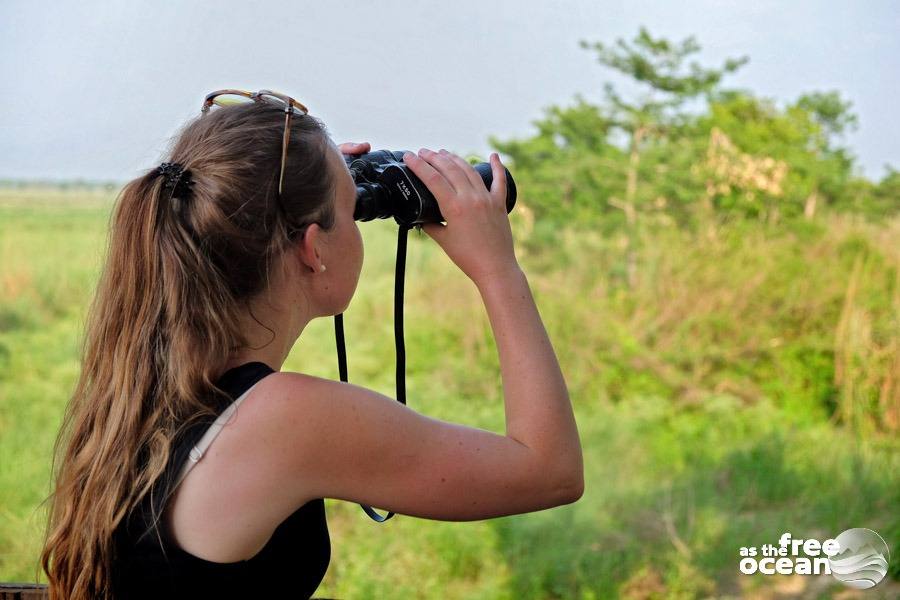
Relaxing lunch break
After a long break, the walk led us out of the forest into the bushes. Our guide received information during the lunch break about a tiger that was seen by a group of tourists earlier in the same morning. It was hot but the monkeys in the trees and the rhinos that we observed in the water holes kept our excitement high and made it easy to forget about the heat.
Our trip continued to be exciting. We discovered the footprints of a tiger in the sand and places where he marked his territory. Later in the afternoon, we could spot more different birds, deer and a mongoose.
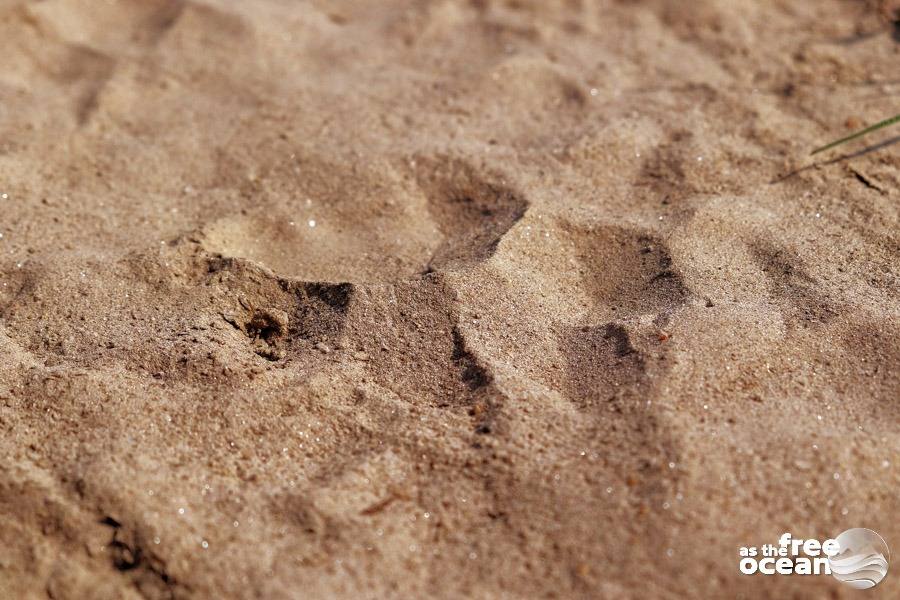
We returned to the starting place at the river, from where we left in the morning. Here I remembered the crocodiles that were probably hiding somewhere in the bushes. Although our tour guide told us that at this time of the day they were not on this side of the jungle, I was not convinced enough to calm down.
One more time we crossed the river by boat. Here we found again the crocodiles and I realized what an adventure we experienced that day.
On the way back to the hostel we met another huge elephant on the street. But at that point we were more excited for the cool shower and the delicious dinner back at the hostel. That night we slept unexceptionally good and the next day woke up with the chirping of birds. It has been a perfect way to end our jungle adventure, before traveling to Pokhara, where, unfortunately, we only had one day to discover the surroundings.
Click here for more pictures from Chitwan National Park.

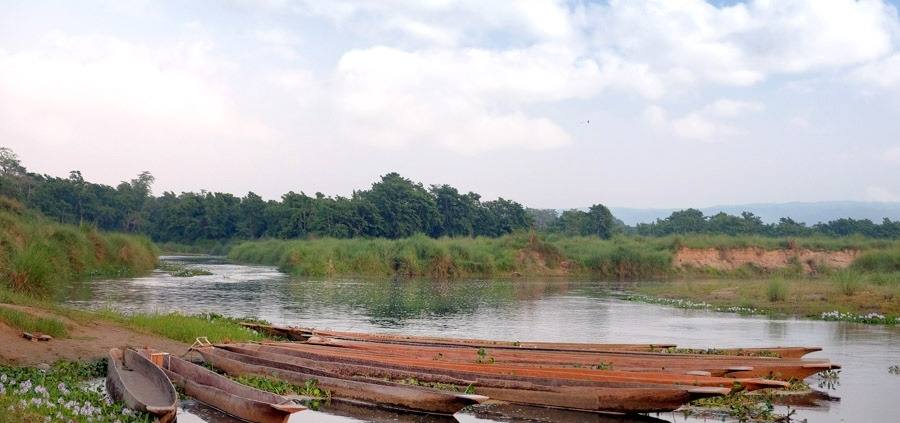

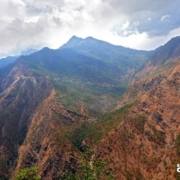
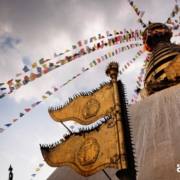
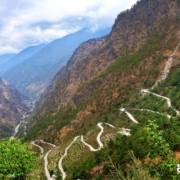


Leave a Reply
Want to join the discussion?Feel free to contribute!